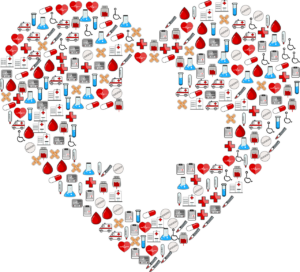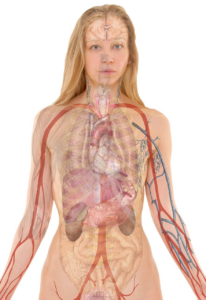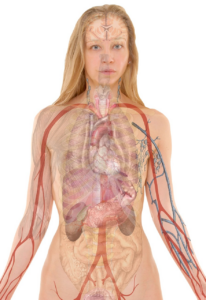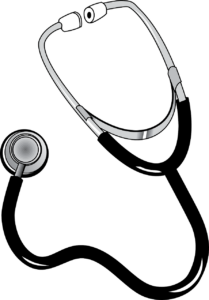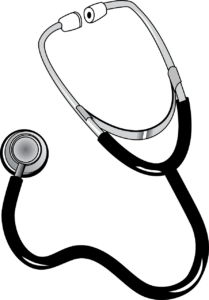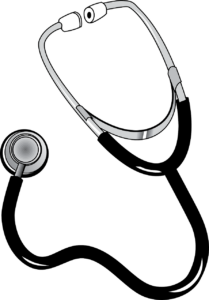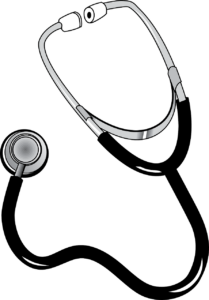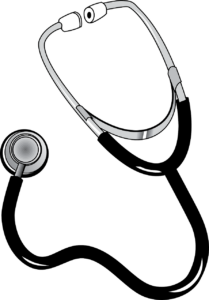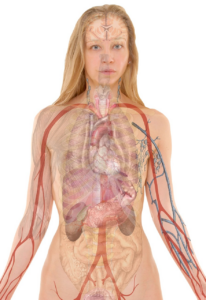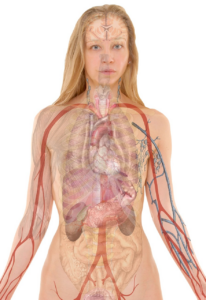Are you studying for the Fundamentals of Nursing Exam 1? Do you want to test your knowledge and assess your understanding of key concepts?
Look no further! In this article, you will find a set of practice questions that will help you prepare for the exam and feel confident on test day.
The Fundamentals of Nursing Exam 1 covers a wide range of topics related to patient care, communication, safety, and infection control. It is essential to have a solid understanding of these fundamental concepts before entering the nursing profession.
By practicing with these exam-style questions, you will not only test your knowledge but also identify areas where you may need further review and reinforcement.
So, let’s get started!
Key Takeaways
- Patient care involves basic hygiene and grooming, monitoring vital signs, and assisting with activities of daily living to promote independence and improve quality of life.
- Effective communication is essential in nursing, and nurses must use a variety of techniques to overcome barriers such as language, cultural, physical, and emotional differences.
- Ensuring patient safety is crucial in healthcare settings, and nurses must follow standard precautions, isolation precautions, and hand hygiene to prevent the spread of infection and medication errors.
- Practice questions can help identify areas for improvement in nursing skills and clinical knowledge, and prioritizing patient safety and infection prevention is important in nursing practice.
Overview of the Fundamentals of Nursing Exam 1
You’re about to learn all about the Fundamentals of Nursing Exam 1, which will give you a solid understanding of the basics of nursing and set you on the path to becoming a successful nurse.
The exam format consists of multiple-choice questions that cover a wide range of topics, including patient care, communication, safety, and infection control. You’ll need to have a good grasp of these concepts to pass the exam and move on to more advanced nursing courses.
To prepare for the Fundamentals of Nursing Exam 1, it’s important to develop effective study strategies. Start by reviewing your class notes and textbook, paying close attention to key terms and concepts.
You can also use practice questions and quizzes to test your knowledge and identify areas where you need to improve. Additionally, consider forming a study group with your classmates to discuss difficult topics and share study tips.
With the right preparation and mindset, you can ace the Fundamentals of Nursing Exam 1 and take the first step towards a rewarding career in nursing.
Patient Care
When it comes to patient care, there are a few key points that you need to keep in mind.
First and foremost, basic hygiene and grooming are incredibly important. This means making sure that your patients are clean and well-groomed, which can have a huge impact on their overall health and wellbeing.
You’ll also need to be able to monitor their vital signs, and assist with activities of daily living like bathing, dressing, and eating.
By focusing on these key areas, you can ensure that your patients receive the best possible care.
Basic hygiene and grooming
Get ready to enjoy learning about basic hygiene and grooming, as we dive into the importance of maintaining cleanliness and personal care for overall health and well-being. Good hygiene practices and personal care routines are crucial for keeping the body clean and healthy.
These practices include taking regular showers or baths, washing hands frequently, and brushing teeth at least twice a day. By keeping a clean body, you can prevent the spread of germs and bacteria that can cause illness.
Additionally, grooming is an important aspect of personal care. Grooming includes maintaining clean and trimmed nails, hair, and facial hair, if applicable. It’s also important to wear clean and appropriately fitting clothing.
By taking care of your appearance, you can boost your self-confidence and feel good about yourself. Basic hygiene and grooming practices may seem like small tasks, but they can have a big impact on your overall health and well-being.
Vital signs and monitoring
Monitoring your vital signs is essential to ensure your body’s proper functioning and to detect any potential health issues early on.
Blood pressure measurement is a vital sign that healthcare professionals routinely check to assess the force of blood against the walls of your arteries. This measurement can indicate if you have high blood pressure, which can lead to serious health complications if left untreated.
Oxygen saturation monitoring is another important vital sign that healthcare professionals frequently check. This measurement assesses the amount of oxygen in your blood and is particularly relevant for individuals with respiratory conditions such as asthma or COPD. Low oxygen saturation levels can be an indication that there is a problem with the lungs or another part of the respiratory system. Prompt medical intervention may be needed to prevent serious complications.
Being aware of your vital signs and having them regularly monitored by a healthcare professional can help you maintain good health and catch any potential health issues early.
Assisting with activities of daily living
Assisting with activities of daily living involves helping individuals with tasks such as bathing, dressing, and eating to promote their independence and improve their quality of life. As a nurse, it’s important to understand the proper techniques for bathing, especially for patients who may have limited mobility or require assistance. This could include using a shower chair or bath bench, ensuring proper water temperature, and using gentle, yet thorough cleaning techniques.
In addition to bathing, nurses may also assist with ambulation, or helping patients move around safely. This could involve using mobility aids such as walkers or canes, or simply providing physical support while the patient walks. It’s important to assess the patient’s strength and balance before assisting with ambulation, and to use proper body mechanics to avoid injury to both the patient and the caregiver.
By providing assistance with activities of daily living, nurses can help patients maintain their independence and improve their overall well-being.
Communication
Effective communication is essential in the nursing profession, as it allows for the establishment of trust and understanding between the nurse and patient. Therapeutic communication is a vital aspect of nursing care, as it involves active listening, empathy, and respect for the patient’s feelings and needs.
By using therapeutic communication techniques, nurses can create a safe and supportive environment for their patients, which can help to reduce anxiety and promote healing. However, there are several barriers to effective communication that nurses must be aware of. These barriers can include language barriers, cultural differences, physical barriers, and emotional barriers.
To overcome these barriers, nurses must be skilled in using a variety of communication techniques, such as active listening, open-ended questioning, and nonverbal communication. By developing these skills, nurses can ensure that they are providing the best possible care to their patients, and that they are able to establish strong and meaningful relationships with them.
Safety
Ensuring patient safety is crucial in any healthcare setting, and as a nurse, you play a pivotal role in identifying and preventing potential risks. One of the most common risks that patients face is falling. Falls can result in serious injuries, especially for elderly patients or those with preexisting medical conditions.
As a nurse, you can take several steps to prevent falls. These include ensuring that patients have appropriate footwear, keeping patient rooms clutter-free, and using bed rails or other safety devices when necessary.
Another critical aspect of patient safety is medication administration. Medication errors can have serious consequences, ranging from mild side effects to life-threatening complications. To prevent medication errors, it’s essential to follow the ‘Five Rights’ of medication administration: the right patient, right medication, right dose, right route, and right time.
To ensure medication administration safety, you should double-check orders, read labels carefully, and verify patient allergies before administering any medication. By being vigilant and proactive, you can help ensure that your patients receive the correct medications in the appropriate doses and at the right times, minimizing the risk of medication errors.
Infection Control
When it comes to infection control, there are three key points you need to keep in mind: standard precautions, isolation precautions, and hand hygiene.
Standard precautions are the basic infection prevention measures that should be used with all patients, regardless of their diagnosis or presumed infection status.
Isolation precautions, on the other hand, are specific measures used to prevent the spread of infectious agents from patients who are known or suspected to be infected with certain pathogens.
And of course, hand hygiene is essential for preventing the transmission of infectious agents from one person to another.
Standard precautions
To prevent the spread of infection, you should always use standard precautions. This means wearing gloves, gowns, and masks when necessary, and properly disposing of contaminated materials. It also means practicing good hand hygiene, which includes washing your hands regularly and using hand sanitizer when soap and water are not available. Standard precautions are important not only for protecting yourself from infection but also for protecting your patients and others around you.
Using personal protective equipment (PPE) is a key component of standard precautions. This includes gloves, gowns, masks, and eye protection. PPE should be used whenever there is a risk of exposure to bodily fluids or other potentially infectious materials. Proper use of PPE not only protects you from infection but also helps prevent the spread of infection to others. Always make sure to properly dispose of contaminated materials and follow all hospital policies and procedures for infection control. By taking these steps, you can help keep yourself and others safe from infection.
| Column 1 | Column 2 | Column 3 |
|---|---|---|
| Disinfecting surfaces frequently | âœ”ï¸ | ⌠|
| Skipping hand hygiene because you’re in a hurry | ⌠| âœ”ï¸ |
| Wearing appropriate PPE when necessary | âœ”ï¸ | ⌠|
| Eating or drinking in patient care areas | ⌠| âœ”ï¸ |
| Properly disposing of contaminated materials | âœ”ï¸ | ⌠|
This table highlights the importance of following infection control protocols and serves as a reminder of the consequences of not doing so. By checking off the appropriate boxes, the audience can visually see the correct and incorrect actions related to infection control. It is important to take infection control seriously and always follow proper procedures to prevent the spread of infection.
Isolation precautions
Isolation precautions are a vital aspect of preventing the spread of infectious diseases in healthcare settings and can be easily implemented with proper training and education.
There are three types of isolation precautions: contact, droplet, and airborne. Contact isolation is used for patients who have infectious diseases that can be spread by physical contact, such as MRSA or C. difficile.
Droplet isolation is used for patients who have infectious diseases that can be spread through respiratory droplets, such as influenza or meningitis. Airborne isolation is used for patients who have infectious diseases that can be spread through airborne particles, such as tuberculosis or measles.
Transmission based precautions are additional precautions that are taken in addition to standard precautions and isolation precautions. These precautions are used when the mode of transmission is not fully understood or when a patient has a highly infectious disease.
Examples of transmission based precautions include wearing personal protective equipment (PPE) such as gowns and gloves, or placing the patient in a negative pressure room to prevent the spread of airborne particles.
It’s important for healthcare professionals to be knowledgeable and trained in the proper use of isolation and transmission based precautions to prevent the spread of infectious diseases.
Hand hygiene
Now that you’ve learned about isolation precautions, it’s time to talk about a crucial aspect of infection control in healthcare settings: hand hygiene. Proper hand hygiene techniques are essential to prevent the spread of harmful pathogens, and hand washing is one of the most effective methods to achieve this.
It’s not just a matter of personal hygiene; it’s a critical component of providing safe and effective healthcare. The importance of hand washing in healthcare settings cannot be overstated. Healthcare workers come into contact with numerous patients and potentially infectious materials every day, and if they don’t practice good hand hygiene, they can inadvertently spread harmful pathogens to others.
Hand washing with soap and water is the preferred method, but alcohol-based hand sanitizers can also be used when soap and water are not readily available. Proper hand hygiene techniques include washing your hands for at least 20 seconds, washing all surfaces of your hands, and using a clean towel or air dryer to dry your hands.
By following these simple steps, healthcare workers can help prevent the spread of infections and keep their patients and themselves safe.
Practice Questions
One helpful strategy for preparing for the fundamentals of nursing exam is to practice answering questions. This will not only help you identify areas where you need to improve, but it will also help you become more familiar with the types of questions that may be asked on the exam. When it comes to nursing skills and clinical knowledge, it’s important to have a solid understanding of hand hygiene.
Here are some practice questions to test your knowledge on hand hygiene:
-
What’s the most effective way to prevent the spread of infection?
-
When should you perform hand hygiene?
-
What’s the proper technique for performing hand hygiene?
-
What are some common mistakes people make when performing hand hygiene?
-
How long should you wash your hands for?
By practicing these types of questions, you can become more confident in your knowledge of hand hygiene and nursing skills in general. Remember to always prioritize patient safety and infection prevention in your practice.
Frequently Asked Questions
What is the passing score for the Fundamentals of Nursing Exam 1?
To pass any exam, you need to achieve a certain score that’s considered the passing score. The passing score for the fundamentals of nursing exam 1 may vary depending on the exam difficulty level.
However, it’s important to note that the passing score is usually set at a level that ensures the test-taker has a good understanding of the subject matter. So, if you want to pass the fundamentals of nursing exam 1, you need to study hard and aim to achieve a score that’s higher than the passing score.
How many questions are on the Fundamentals of Nursing Exam 1?
When taking an exam, it’s important to know how many questions you’ll be facing. The number of questions on an exam can give you an idea of the exam difficulty and how much time you’ll need to complete it.
If you’re wondering about the number of questions on the Fundamentals of Nursing Exam 1, it’s important to note that without the context of the Fundamentals of Nursing Exam 1 Practice Questions: Test Your Knowledge, it may vary depending on the program or institution you’re taking it through. However, in general, nursing exams can be known to have a large number of questions due to the amount of information they cover.
So, it’s best to prepare yourself for a potentially lengthy exam and allow yourself enough time to review and answer each question thoroughly.
Is the Fundamentals of Nursing Exam 1 timed?
When taking an exam, timing requirements can be a major concern. It’s important to know if the exam is timed and if there are any accommodations available if needed.
Some exams may have strict timing requirements where you have a limited amount of time to complete the exam. Other exams may allow for more flexible timing where you can take as much time as you need within a certain timeframe.
It’s important to check with the exam administrator to understand the timing requirements for the specific exam you’re taking. Additionally, if you require exam accommodations due to a disability or other circumstance, it’s important to request these accommodations in advance to ensure you have the necessary support during the exam.
What is the format of the Fundamentals of Nursing Exam 1?
The format of the Fundamentals of Nursing Exam 1 typically consists of a mix of multiple choice, fill-in-the-blank, and short answer questions. The exam is designed to test your understanding of the fundamental concepts and principles of nursing, as well as your ability to apply this knowledge in practical situations.
The types of questions you can expect to encounter on the exam will vary depending on the specific nursing program or curriculum you’re studying, but generally speaking, you should be prepared to answer questions about patient care, nursing interventions, healthcare ethics, and other core nursing concepts.
Overall, the exam format is designed to assess your ability to think critically and apply your knowledge in real-world situations, so it’s important to study and prepare thoroughly in order to succeed.
Are there any prerequisite courses or certifications required before taking the Fundamentals of Nursing Exam 1?
Before taking the fundamentals of nursing exam 1, you may be required to complete certain prerequisite courses or obtain specific certifications. The exact requirements will depend on the institution administering the exam and their specific program guidelines.
It’s important to research and understand these requirements beforehand to ensure that you’re fully prepared to take the exam. Some common prerequisite courses may include anatomy and physiology, nutrition, and medical terminology.
Additionally, certain certifications such as Certified Nursing Assistant (CNA) or Basic Life Support (BLS) may be required. Overall, it’s important to carefully review the requirements and ensure that you meet them before attempting the fundamentals of nursing exam 1.
Conclusion
Overall, practicing and mastering the fundamentals of nursing is essential for providing quality care to patients. Exam 1 covers important topics such as patient care, communication, safety, and infection control. By studying and reviewing these concepts, you’ll not only perform better on the exam but also become a more competent and confident nurse.
Patient care is the cornerstone of nursing. It involves understanding and meeting the physical, emotional, and spiritual needs of patients.
Communication is vital in nursing as it helps to establish trust, assess patient needs, and provide education.
Safety and infection control measures are crucial to prevent harm and ensure a healthy environment for patients and healthcare workers.
By focusing on these fundamentals, you’ll be well on your way to becoming a skilled and compassionate nurse.



























